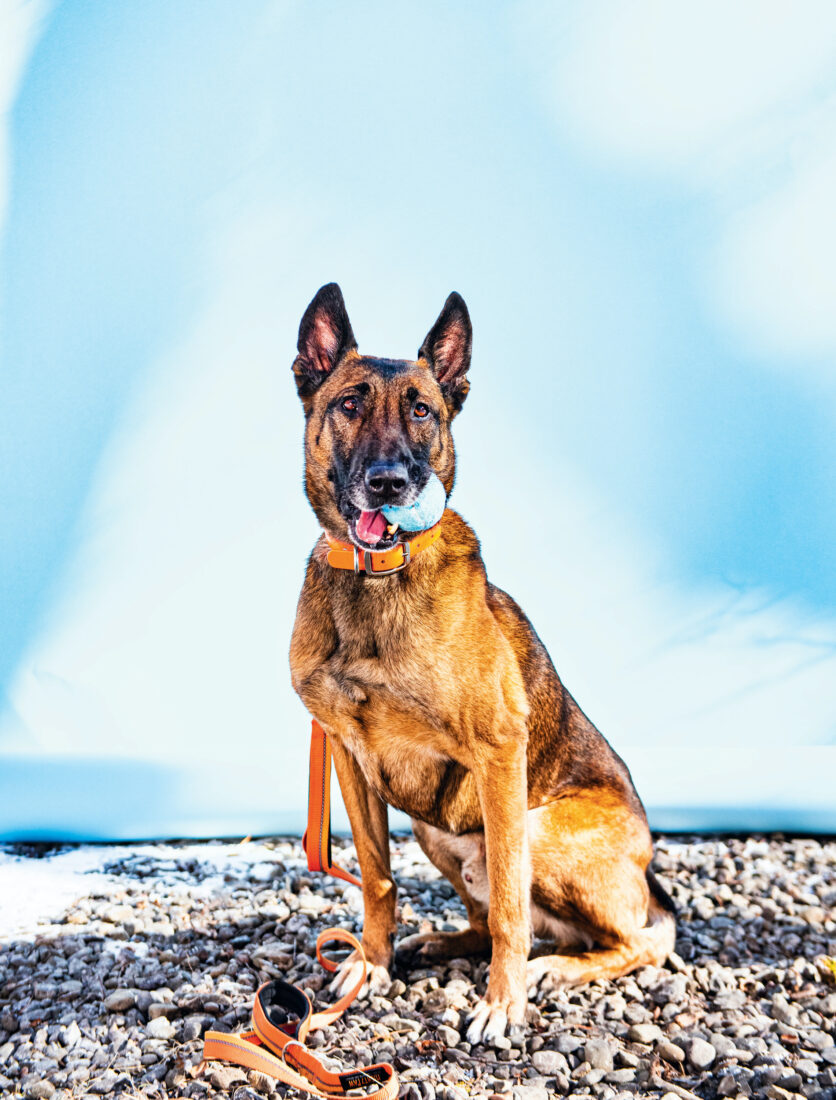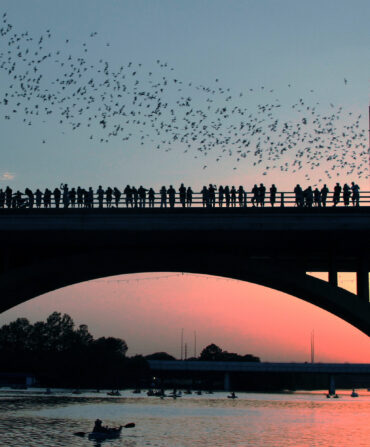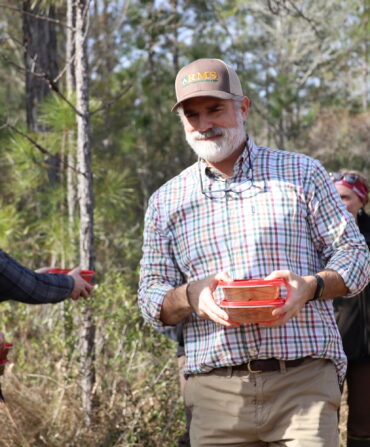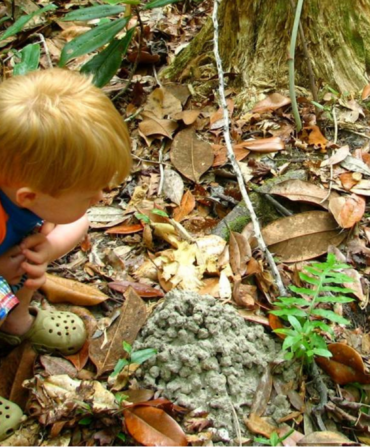It’s barely dawn when the Atlanta Botanical Garden’s conservation team arrives with their new colleague, DJ, at the Chattahoochee-Oconee National Forest. The recruit is partially responsible for the early start: Even in the mountains, DJ, a six-year-old Belgian Malinois, has a hard time with the June heat.
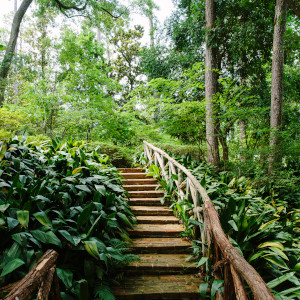
When the group reaches its research site in the forest, DJ gets to work, trotting unleashed between ferns and moss-covered trees with tail aloft and ears pricked. His trainer, the biologist Karen DeMatteo, follows his zigs and zags. Suddenly, the dog’s pace slows, his muscles tense, and his black snout hovers near the ground. He lies down and looks at DeMatteo. In front of his paws, several inches deep in the dirt, hides the root of the elusive orchid the team is training him to find. The scientists celebrate, and DJ gets rewarded with a tennis ball. A few minutes later, he’s back on the job.
Some working dogs are trained to detect narcotics or explosives. DJ’s expertise is rare plants and animals. Conservation detection dogs like him learn how to find species by scent, so scientists can locate, study, and protect them. He and DeMatteo have traveled the world sniffing out jaguars, ocelots, even bush dogs. Now the pair is helping the Atlanta Botanical Garden (ABG) seek an endangered orchid in Georgia and the Carolinas to research and, hopefully, save from extinction.
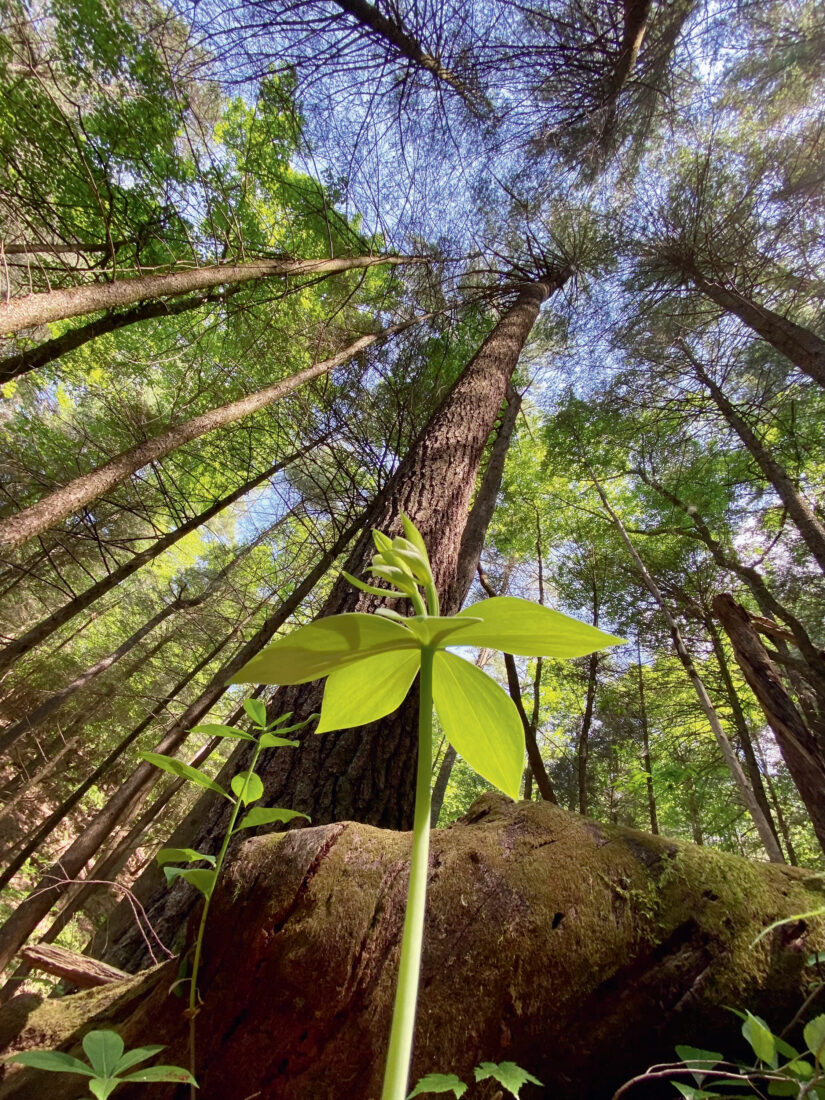
Orchids are one of the ABG’s specialties, and the team needed aid finding the small whorled pogonia, Isotria medeoloides, a perennial orchid crowned with a tiny pinwheel of leaves and one or two pale flowers that habitat loss has almost snuffed out. “We’re really interested in pushing forward any new techniques or advances in conservation and trying to apply them to rare plants,” says Emily Coffey, the ABG’s vice president of conservation and research. Coffey met DeMatteo while pursuing her PhD, and after hearing that Arizona’s Desert Botanical Garden had employed detector dogs to find a rare desert wetland orchid, she applied for a grant to work with her and her canine protégé.
The orchid the ABG seeks can go dormant underground for years—most likely due to subpar conditions—with seemingly no pattern or predictability.
“Understanding where it cannot grow, or where it is dwindling, is crucial” to protecting it, explains Loy Xingwen, an ecologist at the ABG. But finding it in dormancy is “like herding a flock of invisible sheep.”
That is, until DJ. Before the pair’s first field visit last summer, DeMatteo trained him using the scent of a closely related “proxy” orchid. Once in Atlanta, she ran more trials with DJ in Coffey’s backyard. Nerves, Coffey says, were running high: “We were like, ‘We think he has it,’ but you’re so built up emotionally on whether this is going to work.” The first time DJ located a plant, she says, “we were all pretty elated.”
DeMatteo says DJ, who lives with her at home in St. Louis, is “a spinning top of energy.” That enthusiasm suits him well for fieldwork; it’s also how he ended up with her. He failed out of the police academy after recruits found him a little too intense. But now he’s found his bailiwick. He and DeMatteo will return to the Southeast the next three summers to search for the small whorled pogonia where it once was known to exist, including North Carolina’s Nantahala and Pisgah National Forests.
Coffey envisions plenty of future opportunities for employing detection dogs, too, from hunting other rare Appalachian plants to finding threatened magnolia species in Central and South America. “It’s so hard for us to say that a plant is extirpated or extinct,” Coffey explains. “To prove something ‘isn’t there’ means you have to check all of the ‘theres’ that it could be.”


